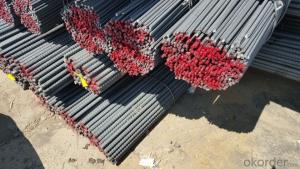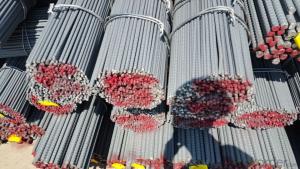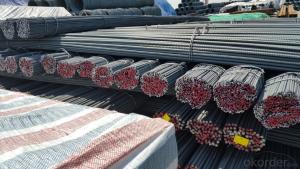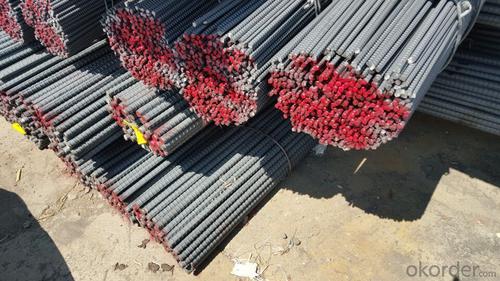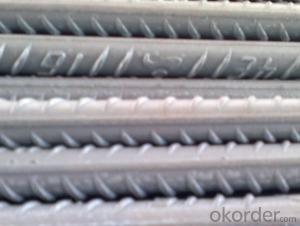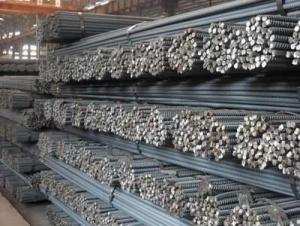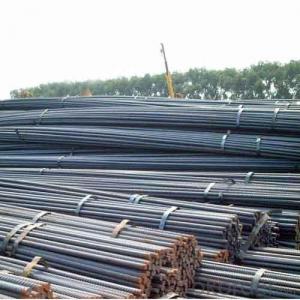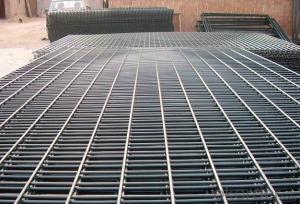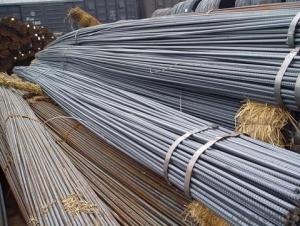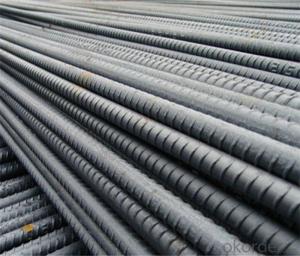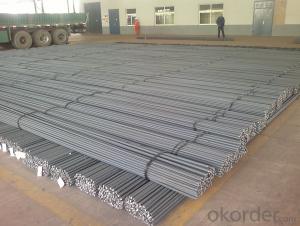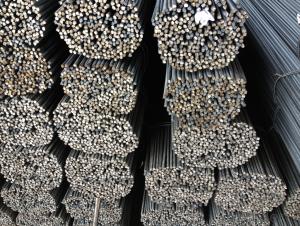Deformed Rebars for Reinforcing Concrete
- Loading Port:
- China main port
- Payment Terms:
- TT OR LC
- Min Order Qty:
- 100 m.t.
- Supply Capability:
- 10000 m.t./month
OKorder Service Pledge
OKorder Financial Service
You Might Also Like
Product Description:
OKorder is offering Deformed Rebars for Reinforcing Concrete at great prices with worldwide shipping. Our supplier is a world-class manufacturer of steel, with our products utilized the world over. OKorder annually supplies products to African, South American and Asian markets. We provide quotations within 24 hours of receiving an inquiry and guarantee competitive prices.
Product Applications:
Deformed Rebars for Reinforcing Concrete are ideal for structural applications and are widely used in the construction of buildings and bridges, and the manufacturing, petrochemical, and transportation industries.
Product Advantages:
OKorder's Deformed Rebars for Reinforcing Concrete are durable, strong, and wide variety of sizes.
Main Product Features:
· Premium quality
· Prompt delivery & seaworthy packing (30 days after receiving deposit)
· Can be recycled and reused
· Mill test certification
· Professional Service
· Competitive pricing
Product Specifications:
Manufacture: Hot rolled
Grade: HRB335,HRB400,HRB500
Certificates: ISO, SGS, BV, CIQ
Length: 6m – 12m, as per customer request
Packaging: Export packing, nude packing, bundled
Deformed Steel Bar | ||
Diameter (MM) | Cross Sectional Area (MM2) | Theorectical Weight (KG/M) |
6 | 28.27 | 0.222 |
8 | 50.27 | 0.395 |
10 | 78.54 | 0.617 |
12 | 113.1 | 0.888 |
14 | 153.9 | 1.21 |
16 | 201.1 | 1.58 |
18 | 254.5 | 2 |
20 | 314.2 | 2.47 |
22 | 380.1 | 2.98 |
25 | 490.9 | 3.85 |
28 | 615.8 | 4.83 |
32 | 804.2 | 6.31 |
36 | 1018 | 7.99 |
40 | 1257 | 9.87 |
FAQ:
Q1: How many tons of steel products could be loaded in containers?
A1: Usually the steel products are delivered by bulk vessel because of the large quantity and the freight. However, there are no bulk vessel enter some seaports so that we have to deliver the cargo by containers. The 6m steel product can be loaded in 20FT container, but the quantity is changed according to the size, usually from 18tons to 25tons.
Q2: How soon can we receive the product after purchase?
A2: Within three days of placing an order, we will arrange production. The normal sizes with the normal grade can be produced within one month. The specific shipping date is dependent upon international and government factors, the delivery to international main port about 45-60days.
Q3: How do we guarantee the quality of our products?
A3: We have established an advanced quality management system which conducts strict quality tests at every step, from raw materials to the final product. At the same time, we provide extensive follow-up service assurances as required.
Images:
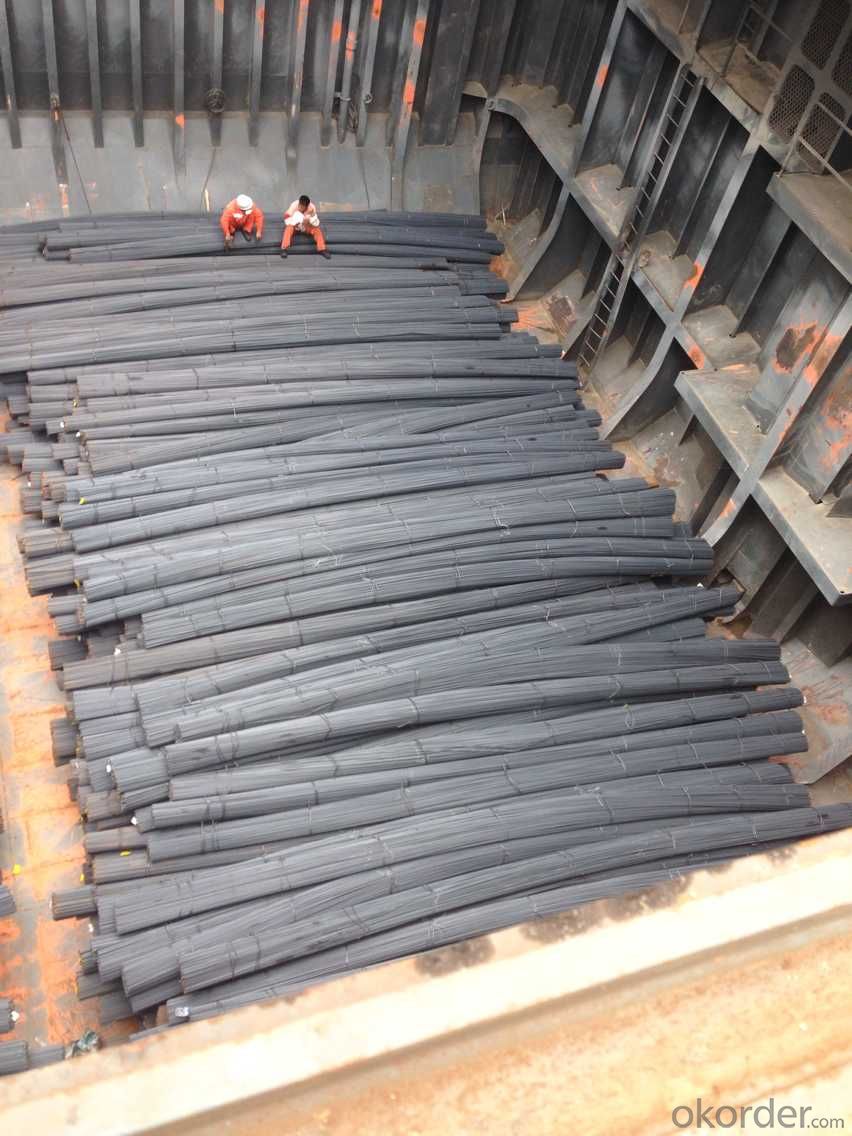
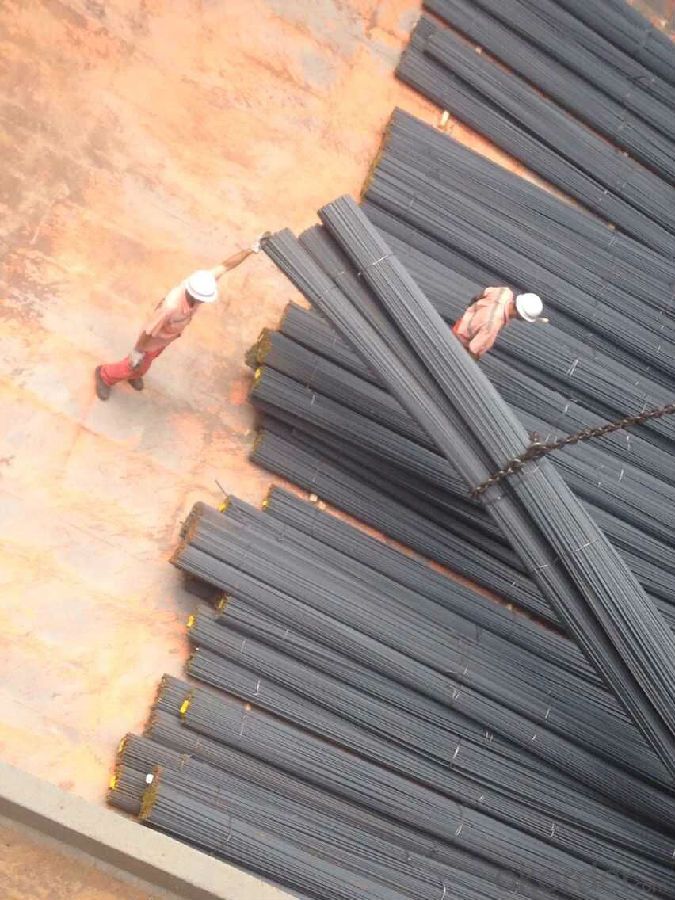
- Q: What is the maximum diameter of steel rebars used in residential construction?
- The maximum diameter of steel rebars typically used in residential construction is around 20 millimeters or 3/4 of an inch.
- Q: What is the average lifespan of a reinforced concrete structure with steel rebars?
- The average lifespan of a reinforced concrete structure with steel rebars can vary depending on various factors such as the quality of construction, maintenance, exposure to environmental conditions, and usage patterns. However, with proper design, construction, and maintenance, reinforced concrete structures with steel rebars can have an average lifespan of 50 to 100 years or more. Reinforced concrete structures are known for their durability and strength due to the combination of concrete and steel reinforcement. The concrete provides compressive strength, while the steel rebars provide tensile strength, making the structure resistant to various loads and forces. However, over time, reinforced concrete structures may experience degradation due to factors such as exposure to moisture, chemicals, temperature changes, and loading conditions. These factors can lead to the corrosion of steel rebars, which is a common concern for the longevity of such structures. Corrosion occurs when moisture and oxygen penetrate the concrete, causing the steel rebars to rust. This rusting process can lead to the expansion of the steel rebars, causing cracks in the concrete and further accelerating the deterioration of the structure. To mitigate the effects of corrosion and extend the lifespan of reinforced concrete structures, various measures can be taken. These include using high-quality concrete and steel rebars, applying protective coatings, implementing proper drainage systems, and conducting regular inspections and maintenance. With appropriate maintenance and upkeep, reinforced concrete structures can last well beyond their average lifespan. However, it is crucial to note that the lifespan can vary depending on specific conditions and circumstances. Therefore, it is essential to consult with structural engineers and industry professionals to assess and determine the expected lifespan of a particular reinforced concrete structure.
- Q: Why is thread steel thinner than crude?
- Because the surface has a thread shape, it can increase the firm bond with the concrete. The longitudinal reinforcement and stirrups shall be used preferentially in the concrete members. Because the rebar is low alloy steel and its price is higher than that of low carbon round steel, the construction unit or design unit usually starts from the practical angle of the general civil building
- Q: How are steel rebars protected during transportation and shipping?
- Steel rebars are typically protected during transportation and shipping through various methods such as bundling, wrapping, and using protective coatings. They are commonly bundled together using steel strapping or wire ties to prevent them from shifting or falling apart during transit. Additionally, rebars are often wrapped in plastic or paper to shield them from moisture, dust, and other external elements. Furthermore, some rebars may be coated with corrosion-resistant materials or painted to enhance their durability and prevent rusting. These protective measures ensure that steel rebars reach their destination in good condition, ready for use in construction projects.
- Q: Are steel rebars suitable for use in wastewater treatment plants?
- Steel rebars are indeed a suitable option for utilization in wastewater treatment plants. The demanding and corrosive surroundings of these facilities often necessitate reinforced concrete structures. Fortunately, steel rebars, frequently employed for concrete reinforcement, provide the strength and durability required for such constructions. Their resistance to corrosion is particularly advantageous in wastewater treatment plants, where the presence of chemicals and corrosive elements is prevalent. Moreover, steel rebars offer exceptional tensile strength, guaranteeing that the concrete structures can endure substantial loads and pressures. All in all, steel rebars prove to be a dependable and suitable selection for incorporation in wastewater treatment plants, as they ensure the facility's longevity and structural integrity.
- Q: How do steel rebars contribute to the energy efficiency of a building?
- Steel rebars contribute to the energy efficiency of a building in several ways. Firstly, steel rebars are used to reinforce concrete structures, such as beams, columns, and walls. This reinforcement helps to increase the structural integrity of the building, allowing it to withstand various loads and forces. This, in turn, reduces the need for excessive materials in the construction process, leading to a more energy-efficient building. Additionally, steel rebars have excellent thermal conductivity properties. This means that they can efficiently transfer and distribute heat throughout the building, helping to regulate the internal temperature. By evenly distributing heat, steel rebars help to minimize temperature fluctuations, reducing the need for excessive heating or cooling systems, thus saving energy. Moreover, steel rebars have a long lifespan and require minimal maintenance. This durability ensures that the building remains structurally sound over time, reducing the need for frequent repairs or replacements. As a result, the energy consumed in maintenance and renovation activities is significantly reduced. Furthermore, the use of steel rebars allows for the construction of larger, open spaces with fewer supporting columns. This design flexibility facilitates the integration of natural light and ventilation, reducing the reliance on artificial lighting and air conditioning systems. By maximizing natural resources, steel rebars contribute to the energy efficiency of the building. In conclusion, steel rebars play a vital role in enhancing the energy efficiency of a building. Their ability to reinforce structures, efficient thermal conductivity, durability, and design flexibility all contribute to reducing the energy consumption associated with construction, maintenance, and operation of the building.
- Q: How do steel rebars affect the overall corrosion resistance of marine structures?
- The overall corrosion resistance of marine structures is significantly affected by steel rebars. Depending on various factors, the presence of steel rebars in concrete marine structures can either enhance or deteriorate their resistance to corrosion. To begin with, when appropriate preventive measures are taken, steel rebars can enhance corrosion resistance. For example, if the rebars are adequately coated with anti-corrosion materials like epoxy or zinc, they can provide an additional layer of protection against the corrosive effects of seawater. Moreover, ensuring proper concrete cover and compaction during construction can help prevent seawater from penetrating the rebars, reducing the risk of corrosion. Conversely, if steel rebars are not properly coated or if the concrete cover is insufficient, they can contribute to the degradation of marine structures. When exposed to the aggressive marine environment, rebars can corrode, leading to rust formation. Rust occupies more space than steel, causing expansion that exerts pressure on the surrounding concrete. This pressure can result in concrete cracking and spalling, further exposing the rebars to corrosion and compromising the overall structural integrity of the marine structure. Regular maintenance and inspection are crucial to mitigate the negative effects of steel rebars on corrosion resistance. Periodic inspections can help identify any signs of corrosion, enabling timely repairs or replacement of rebars. Additionally, implementing cathodic protection systems can provide an electrochemical countermeasure against corrosion, ensuring the longevity and durability of the marine structure. In conclusion, steel rebars play a vital role in the corrosion resistance of marine structures. Proper coating, concrete cover, and maintenance measures are essential to ensure the positive contribution of rebars to corrosion resistance. Neglecting these factors can lead to the degradation of marine structures.
- Q: Can steel rebars be used in water treatment facilities?
- Yes, steel rebars can be used in water treatment facilities. Steel rebars are commonly used in the construction of various structures, including water treatment facilities. They provide strength and durability to the concrete structures, ensuring their stability and longevity in the harsh environment of water treatment facilities.
- Q: Can steel rebars be used in underwater structures?
- Yes, steel rebars can be used in underwater structures. However, they need to be coated or protected to prevent corrosion caused by the water and salt exposure. Special measures such as using corrosion-resistant coatings or epoxy coatings are typically applied to ensure the longevity and durability of the rebars in such environments.
- Q: Can steel rebars be used in historical buildings restoration?
- Indeed, the utilization of steel rebars is applicable in the restoration of historical buildings. These rebars, commonly employed in construction, are capable of providing structural reinforcement to fortify the existing structures of such buildings. Through careful implementation, the integration of steel rebars can effectively restore stability and integrity while preserving the historical significance of these structures. Nevertheless, it is crucial to consider the specific requirements and guidelines for restoring historical buildings, thus ensuring that the use of steel rebars does not compromise the authenticity or aesthetic value of the structure. Successful incorporation of steel rebars in the restoration process necessitates proper planning, consultation with preservation experts, and adherence to conservation principles.
Send your message to us
Deformed Rebars for Reinforcing Concrete
- Loading Port:
- China main port
- Payment Terms:
- TT OR LC
- Min Order Qty:
- 100 m.t.
- Supply Capability:
- 10000 m.t./month
OKorder Service Pledge
OKorder Financial Service
Similar products
Hot products
Hot Searches
Related keywords
